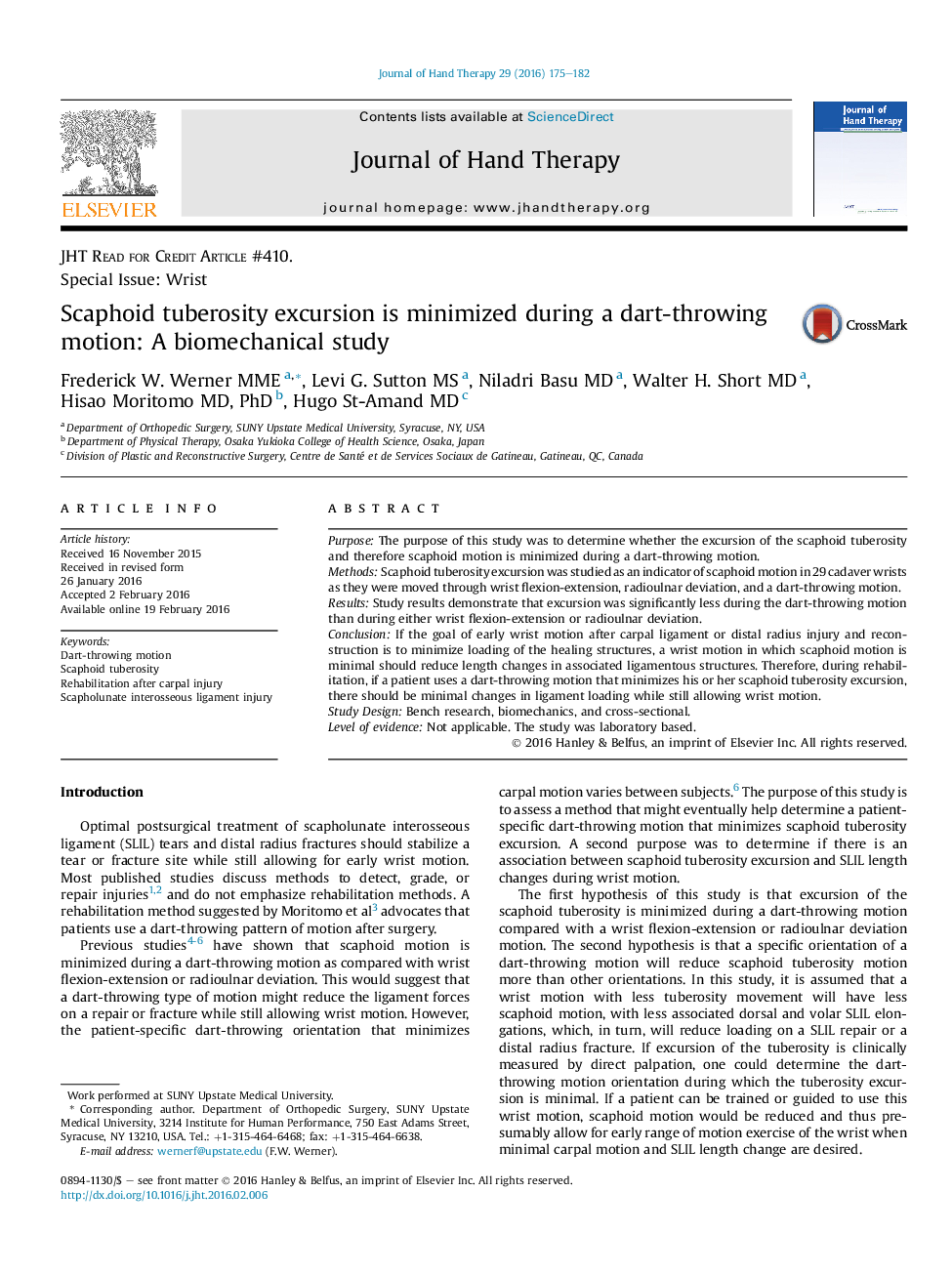| Article ID | Journal | Published Year | Pages | File Type |
|---|---|---|---|---|
| 2690964 | Journal of Hand Therapy | 2016 | 8 Pages |
PurposeThe purpose of this study was to determine whether the excursion of the scaphoid tuberosity and therefore scaphoid motion is minimized during a dart-throwing motion.MethodsScaphoid tuberosity excursion was studied as an indicator of scaphoid motion in 29 cadaver wrists as they were moved through wrist flexion-extension, radioulnar deviation, and a dart-throwing motion.ResultsStudy results demonstrate that excursion was significantly less during the dart-throwing motion than during either wrist flexion-extension or radioulnar deviation.ConclusionIf the goal of early wrist motion after carpal ligament or distal radius injury and reconstruction is to minimize loading of the healing structures, a wrist motion in which scaphoid motion is minimal should reduce length changes in associated ligamentous structures. Therefore, during rehabilitation, if a patient uses a dart-throwing motion that minimizes his or her scaphoid tuberosity excursion, there should be minimal changes in ligament loading while still allowing wrist motion.Study DesignBench research, biomechanics, and cross-sectional.Level of evidenceNot applicable. The study was laboratory based.
